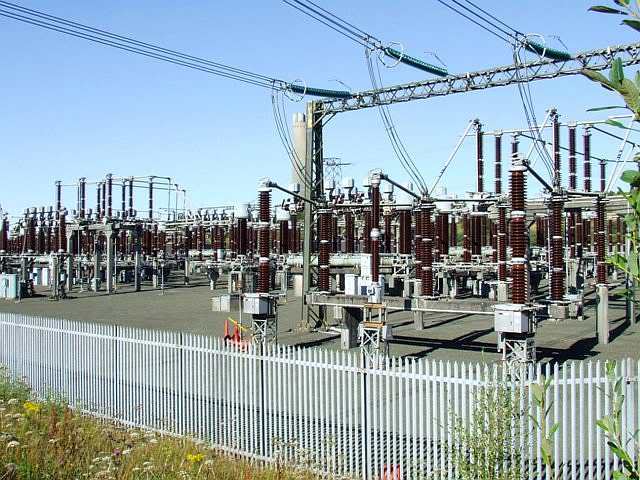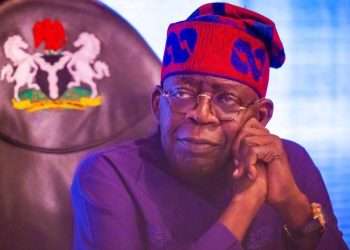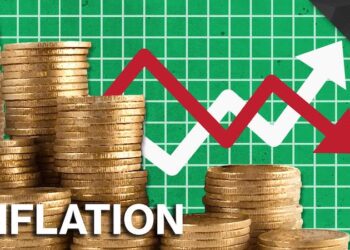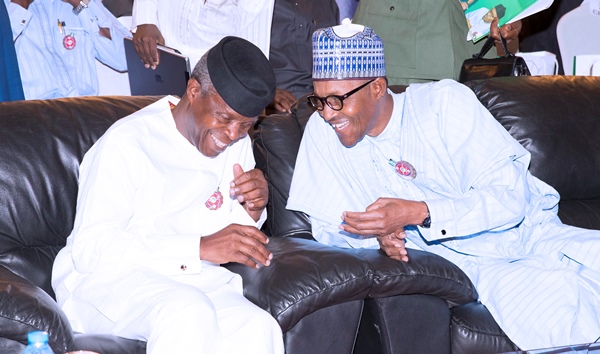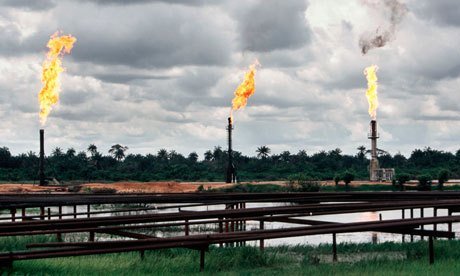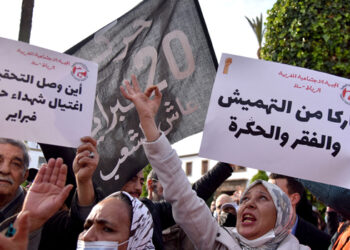The Independent Media and Policy Initiative (IMPI), a Think Tank, has justified the new tariff for Nigeria’s top end electricity consumers but does not think the authorities are doing enough to communicate with Nigerians.
In a policy statement signed by its Chairman Niyi Akinsiju, the Policy Think tank noted that there is a need for Nigerians to know that years of little or no investment in the power value chain had created a major challenge for the sector.
IMPI said: “The crux of the matter is bridging the historically huge gap between demand and supply of electric power to the people. This necessitates the need for investment, not just of the common place quantum, but of the hefty sort.
“This must have compelled the declared goal of the Minister of Power, Adebayo Adelabu, who in September 2023, noted that the Federal Government, in a bid to boost electricity generation, is planning a $20bn investment injection to the national grid in form of creation of new power plants and invigorating the transmission lines.
“According to him, ‘The Nigerian government is actively advancing the power sector through various measures. With a $20 billion investment plan, new power plants and transmission lines are set to be established to boost power generation and grid stability to attain at least 20,000 megawatts of electricity generation in the next three years.’
“The Minister further informed, and we agree, that the mid – and long-term power generation targets of 30,000MW by 2030 and 60,000MW by 2060 is achievable. He said enough investments must be made to not only generate power but also on how to transmit same to end users.
“Coming on the back of the Minister’s position, we are of the strong opinion that the Minister is highly persuaded and shares the same belief in the industry as earlier articulated by President Bola Ahmed Tinubu to ramp up electric power generation and distribution up to 20,000 megawatts.
“This targeted kilowatts figure should ordinarily sound pleasing to the beleaguered ears of the vast number of Nigerians that had, over the years, been deprived of the basic comfort of life that should be enabled by regular electricity supply.
“The same applies to entrepreneurs who have had to commit more than 30 per cent of their operating costs on funding alternative power sources for their production activities. Nevertheless, there appears to be no grand enthusiasm to the warm prospect of increased power supply as enunciated by the Minister of Power because, as we observe, there is an active resistance to his good prognosis.
“At the heart of the 20,000 megawatts goal is the requirement for a huge investment outlay in the electricity supply industry which should be expected. But on the back of the vision to crystallise this huge investment outlay is the need to increase tariff rates, so that they can be cost reflective.”
The policy think-tank blamed the inability of Nigerians to key into the government plan on poor messaging and also urged the authorities to justify the 20-hour plus daily benchmark for power supply to top- end electricity consumers affected by the tariff hike.
“We have continued to observe increasing belligerence in the reaction of many Nigerians outside the Band A class of consumers against the increase in the tariff rate as it affects those classified as Band A.
“We are of the opinion that there is a lack of appropriate communication strategy to talk directly to these other classes of electricity consumers to better comprehend and appreciate the subsidy inbuilt into the Band A consumers’ bill which is for the purpose of sustaining their own access to the national grid.
“We also frown at the extent of the effectiveness of the condition precedent to the Band A’s rate increase which is premised on availing subscribers in that band of at least up to 20 hours of power supply in a day.
“We have received several complaints indicating daily shortfalls in this supply threshold. We, thereby, admonish the concerned authorities to justify the 20 hours of electricity supply a day condition for the increased rate to address possible trust issues among the larger populace,” it noted.
The policy group provided data to show that majority of Nigerians have continued to enjoy some of the cheapest electricity tariffs in the world but also canvassed lower tariffs for manufacturers.
“it should be noted that Nigeria’s household electricity tariff at $0.02 per kilowatt hour is one of the cheapest rates in the world. This is the rate still charged the 85 per cent of electricity consumers in Bands B-E.
“This compares to the $0.53 per kilowatt hour paid by individual electricity consumers in Ireland and the $0.22 charged consumers in Kenya.
“We attest to the use of discriminatory tariff pricing to subsidize a targeted class or to incentivize it. This is especially so for industrial and agriculture users.
“We, thus, canvass for the adoption of the variation of the Increasing Block Tarriffs that had been adopted by some low- and middle-income countries that have prioritized their industrial growth, in which the industrial and commercial tariffs are lower than residential tariffs, for instance, Argentina, Peru, Indonesia, Vietnam, Columbia, South Africa, Morocco and Kenya.
“Even some African countries like Mali, Rwanda and Togo with low income per capita, prefer productive business activities more by charging a lower tariff than household electricity tariff,” it added.
End
POLICY STATEMENT 014 ISSUED BY THE INDEPENDENT MEDIA AND POLICY INITIATIVE (IMPI)
NIGERIA’S ELECTRICITY SUPPLY INDUSTRY: POSSIBILITY OF THE NEXT BIG THING
This year, 2024, the Nigeria Electricity Supply Industry (NESI) will be 128 years old. In the intervening years between 1896 and 2024, the industry had changed names six times, starting out in 1896 as a unit under the Public Works Department (PWD). It grew and was known variously at different times as Nigeria Electricity Supply Company (NESC) in 1929, Electricity Corporation of Nigeria (ECN) in 1950, Niger Dams Authority (NDA) in 1968, Nigeria Electric Power Authority (NEPA) in 1972, and Power Holding Company of Nigeria (PHCN) in 2002.
While the industry had shown much fecundity in christening and re-christening itself in response to new or emerging realities and mandates, it had wallowed abysmally in delivering its principal objective of electricity supply to the people and industries of the country.
Recorded statistics show that the Nigeria Electricity Supply Company commenced operation, first as the Electricity Utility Company in 1923 with capacity to generate 64 kilowatts (KW) of power (Gotodok, 2022). This was strictly to serve the administrative and security needs of the Lagos Colony administrators and their native workers, taking into account the energy needs of the indigenous business men who were said to be under the perennial siege of robbers in the Lagos area.
Between 1928 and 1939, electricity supply companies were established in Port Harcourt 1928, Kaduna, 1929, Enugu, 1933, Maiduguri 1934, Yola 1937, Zaria 1938, Warri, 1939, Calabar 1939 (Awosope, 2024). These electricity generating and distribution companies were predominantly small entities generating power for the small circle of elites in the administrative capital of colonial provinces of those years.
This lays the background to the crises of electricity supply to the larger population of the country, which continues to haunt the nation until today. Critical as electricity had historically been to development and economic growth, it had merely served the conveniences and status disposition of the elites in Nigeria. This reflects in the quantum of generated and distributed electricity power between 1923 when the Electricity Utility Company was established and 1978, when all electricity generating and distribution concerns were merged to form the Nigeria Electric Power Authority (NEPA). Even the consortium could amount to only a meagre 155.2 megawatts for a population of 68.63 million (Macrotrends.com, 2024).
And perhaps, more distressing has been the appalling slow pace of electricity generation and distribution between 1978 and 1999. By 1999, only 19 out of the 79 existing generation plants were operational, and just about 1,736 megawatts of power were generated daily (Ogbogodo, 2020). This implies that despite advanced technology in power generation and distribution, NEPA could only add 1,580.8 megawatts to its generation and distribution capacity in 46 years.
The immediate explanation for this is that there were barely any form of investments in electricity infrastructure between 1983 and 1998. Consequently, by 1999, more than 90 million Nigerians were living in total darkness. The aggregate character of the power industry at that time, just like now, is that demand far outweighs supply and the burden of demand for power had become the source of social tension among classes of the population.
Indeed, the prevailing tension and social grumbling against access to electric power in Nigeria has its roots in the history of electricity power development in the country. This is the hallmark of the industry which, in contemporary time, is only able to deliver an average 4,500 megawatts of power daily for the use of more than 220 million Nigerians in 2024. This is after the so-called privatization of the sector. This continued paucity of electricity power supply has had and still continues to have huge implications for the economic development of the country and the standard of living of its people.
The crux of the matter is bridging the historically huge gap between demand and supply of electric power to the people. This necessitates the need for investment, not just of the common place quantum, but of the hefty sort. This must have compelled the declared goal of the Minister of Power, Adebayo Adelabu, who in September 2023, noted that the Federal Government, in a bid to boost electricity generation, is planning a $20bn investment injection to the national grid in form of creation of new power plants and invigorating the transmission lines (Punch, 2023).
According to him, “The Nigerian government is actively advancing the power sector through various measures. With a $20 billion investment plan, new power plants and transmission lines are set to be established to boost power generation and grid stability to attain at least 20,000 megawatts of electricity generation in the next three years.”
The Minister further informed, and we agree, that the mid – and long-term power generation targets of 30,000MW by 2030 and 60,000MW by 2060 is achievable. He said enough investments must be made to not only generate power but also on how to transmit same to end users. Coming on the back of the Minister’s position, we are of the strong opinion that the Minister is highly persuaded and shares the same belief in the industry as earlier articulated by President Bola Ahmed Tinubu to ramp up electric power generation and distribution up to 20,000 megawatts.
This targeted kilowatts figure should ordinarily sound pleasing to the beleaguered ears of the vast number of Nigerians that had, over the years, been deprived of the basic comfort of life that should be enabled by regular electricity supply.
The same applies to entrepreneurs who have had to commit more than 30 per cent of their operating costs on funding alternative power sources for their production activities. Nevertheless, there appears to be no grand enthusiasm to the warm prospect of increased power supply as enunciated by the Minister of Power because, as we observe, there is an active resistance to his good prognosis.
At the heart of the 20,000 megawatts goal is the requirement for a huge investment outlay in the electricity supply industry which should be expected. But on the back of the vision to crystallise this huge investment outlay is the need to increase tariff rates, so that they can be cost reflective.
This may have informed the recent decision by the Power Ministry working through the National Electricity Regulatory Commission (NERC) to approve increase in the tariff of the willing buyer class, dubbed Band A, from N66/kwh to N225/kwh.
For clarity, we can confirm that the Power Ministry decided on this rate increase based on the adoption of a tariff payment model, which justifies the increase. This tariff model aligns more with the Increasing Block Tariffs (IBTs). These are designed to provide a social safety cover where all consumers can access electricity at an affordable tariff, including low-end consumers. In this tariff design, a shortfall in revenue is recovered from high-end consumers. The first block is usually priced to cover about 50 per cent or less of operating costs, while in the final block/blocks, the tariff applied is above the average operating expenses or actual cost of service. The design of IBTs varies with these blocks’ number, size, and unit price across countries applying this tariff design.
The IBT tariff model is a form of cross-subsidization that is aimed at protecting the disadvantaged group of consumers against tariff hikes. It must, however, be noted that Cross-subsidization or IBTs yields positive results only when a higher percentage of poor households are connected to the grid (Huenteler et al., 2017).
Nonetheless, we have continued to observe the increasing belligerence in the reaction of many Nigerians outside the Band A class of consumers against the increase in the tariff rate as it affects those classified as Band A. We are of the opinion that there is a lack of appropriate communication strategy to talk directly to these other classes of electricity consumers to better comprehend and appreciate the subsidy inbuilt into the Band A consumers’ bill which is for the purpose of sustaining their own access to the national grid.
We also frown at the extent of the effectiveness of the condition precedent to the Band A’s IBT rate increase which is premised on availing subscribers in that band of at least up to 20 hours of power supply in a day. We have received several complaints indicating daily shortfalls in this supply threshold. We, thereby, admonish concerned authorities to justify the 20 hours of electricity supply a day condition for the increased rate to address possible trust issues among the larger populace.
Meanwhile, it should be noted that Nigeria’s household electricity tariff at $0.02 per kilowatt hour (Statista, 2024) is one of the cheapest rates in the world. This is the rate still charged the 85 per cent of electricity consumers in Bands B-E. This compares to the $0.53 per kilowatt hour (Statista, 2024) paid by individual electricity consumers in Ireland and the $0.22 charged consumers in Kenya.
We attest to the use of discriminatory tariff pricing to subsidize a targeted class or to incentivize it. This is especially so for industrial and agriculture users. We, thus, canvass for the adoption of the variation of the IBTs that had been adopted by some low- and middle-income countries that have prioritized their industrial growth, in which the industrial and commercial tariffs are lower than residential tariffs, for instance, Argentina, Peru, Indonesia, Vietnam, Columbia, South Africa, Morocco and Kenya. Even some African countries like Mali, Rwanda and Togo with low income per capita, prefer productive business activities more by charging a lower tariff than household electricity tariff (Malik and Urooj, 2022). It is beyond doubt that price variation across sectors creates horizontal injustice to the productive sectors of the economy and we are certain this falls within the overall purview of President Tinubu’s Renewed Hope Agenda.
We have issued this policy statement to amplify our concern on the need to engender a consumer-driven investment enablement for the nation’s electric power infrastructure. This is in the knowledge of the fact that funding of the industry was very low or even non-existent between 1983 and 1998. Indeed, until the advent of civil rule in 1999, no major development was witnessed in the industry.
At this time, the whole infrastructure had become dilapidated and, hence, needed to be scrapped and rebuilt (Awosode, 2014). The country still suffers from the overhang of that investment deficit despite the 2013 power sector privatization. We call for not just a revamp of the sector but also an active plan to attain the 20,000 megawatts target announced by the Power Minister.
Fortunately, however, the global investment universe, despite the orchestrated shortcomings of Nigeria’s electricity supply industry, is embracing the country power industry as a destination of choice for investments. According to the World Bank, investors and financiers interested in the power sector in Sub-Saharan Africa assign more importance to policy and regulatory risks than to country context risks and risks related to the wider power sector context, such as the track record of private investment. For this reason, even in difficult country and sector contexts, policy makers can attract private participation by putting in place policy and regulatory frameworks that make projects attractive for private solutions.
Respondents perceive three segments—power generation, off-grid electrification and mini-grids—as ready for private solutions in Sub-Saharan Africa. They rank the following countries as the most attractive markets for investments over the next three years: Kenya, Uganda, Rwanda, South Africa, Nigeria, Côte d’Ivoire, Zambia, Senegal and Mozambique. These results provide insights for governments and development partners aiming to attract more private solutions to their power sectors.
When asked to evaluate their experiences in countries in which they had invested, respondents report “positive” experiences in six countries: Kenya, Namibia, Nigeria, Senegal, South Africa and Tanzania. Many of the surveyed equity investors and financiers plan to invest in the region in the next three years. When asked about the most attractive markets for investments over the next three years, they ranked nine countries as “positive” on average: Kenya, Uganda, Rwanda, South Africa, Nigeria, Côte d’Ivoire, Zambia, Senegal and Mozambique. Most of these countries, like Nigeria, have seen substantial power sector reform efforts, often over a decade or more, to provide adequate policy and regulatory frameworks for investment.
By our estimation and aggregation, we are of the strong belief that if ongoing policy efforts and stakeholders’ engagements are sustained in the electricity supply industry, the turnaround of the industry with its associated multiplier impact on the larger national economy may be the next big thing to happen to Nigeria and its development prospects.
Signed
Chief Niyi Akinsiju, (F. Cifian)
Chairman,
Independent Media and Policy Initiative
June 10, 2024

